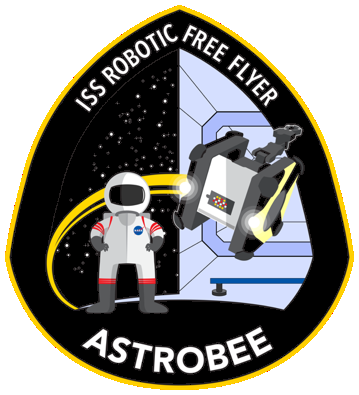 |
NASA Astrobee Robot Software
0.19.1
Flight software for the Astrobee robots operating inside the International Space Station.
|
 |
NASA Astrobee Robot Software
0.19.1
Flight software for the Astrobee robots operating inside the International Space Station.
|
These Python utilities enable us to process logged ff_msgs/PicoflexxIntermediateData messages on the /hw/depth_haz/extended topic and split the data to regenerate both point cloud messages normally logged on the /hw/depth_haz/points topic and amplitude image messages logged on the /hw/depth_haz/extended/amplitude_int topic. (Those are the HazCam-specific topics; to use PerchCam, specify --cam=perch.)
As a result, once these tools are fully validated, we will no longer need to log the latter two topics, providing a major savings in data volume. To quantify the impact, we studied the longest delayed bag from the SoundSee-Data-3 Astrobee ISS activity, running an ISAAC-style survey. Out of a total bag size of 20.9 GB, the top four messages by data volume were NavCam images (8.6 GB), HazCam point clouds (6.3 GB), HazCam extended messages (5.0 GB), and HazCam amplitude images (0.6 GB). By no longer logging point clouds and amplitude images, we could save up to 6.9 GB (33%). These savings impact not just storage space on the Astrobee MLP but also CPU load required to log the data, which experience shows can be significant.
So far, these tools were tested only under Ubuntu 18.04 and Python 2.7 on the host astrobeast.ndc.nasa.gov. This host already had the necessary dependencies pre-installed by the admins in the ARC-TI Systems Group, so no installation steps were needed, other than checking out the scripts from the repository.
Some minor changes would probably be needed to support Python 3.x. If the tools will be used on other hosts that aren't pre-configured, this section should be expanded to document how to install the dependencies.
Using these tools is a two-step process:
This usage example shows how to do the prep:
scripts=$HOME/astrobee/src/hardware/pico_driver/scripts # example bag archived at hivemind.ndc.nasa.gov:/home/data-processing/freeflyer/2022-01-03_100/robot_data/SN003/bags inbag=20220103_1429_soundsee_isaac_isaac_survey15mins.bag $scripts/pico_write_xyz_coeff.py $inbag bumble_haz_xyz_coeff.npy # optional: dry run and check data quality $scripts/pico_split_extended.py $inbag bumble_haz_xyz_coeff.npy haz_split.bag $scripts/pico_check_split_extended.py $inbag haz_split.bag
And this example excerpts the one step needed in production:
$scripts/pico_split_extended.py $inbag bumble_xyz_coeff.npy haz_split.bag
A file of xyz coefficients is required to recover point clouds from extended messages.
Using the pico_write_xyz_coeff.py script, the xyz coefficients are effectively derived from the camera intrinsic parameters stored in the camera firmware. These parameters are unique to each Pico Flexx serial number and calibrated at the factory. By convention, when saving the coefficients, the output file name should document which robot and which camera (haz or perch) the coefficients are for. During reconstruction, be careful to use the correct coefficients file for your robot and camera.
The method we are using to recover the coefficients requires a bag of sample data recorded from the sensor, and it can only produce coefficients for a given sensor pixel if at least one frame of the input bag has valid depth data for that pixel. This means that: